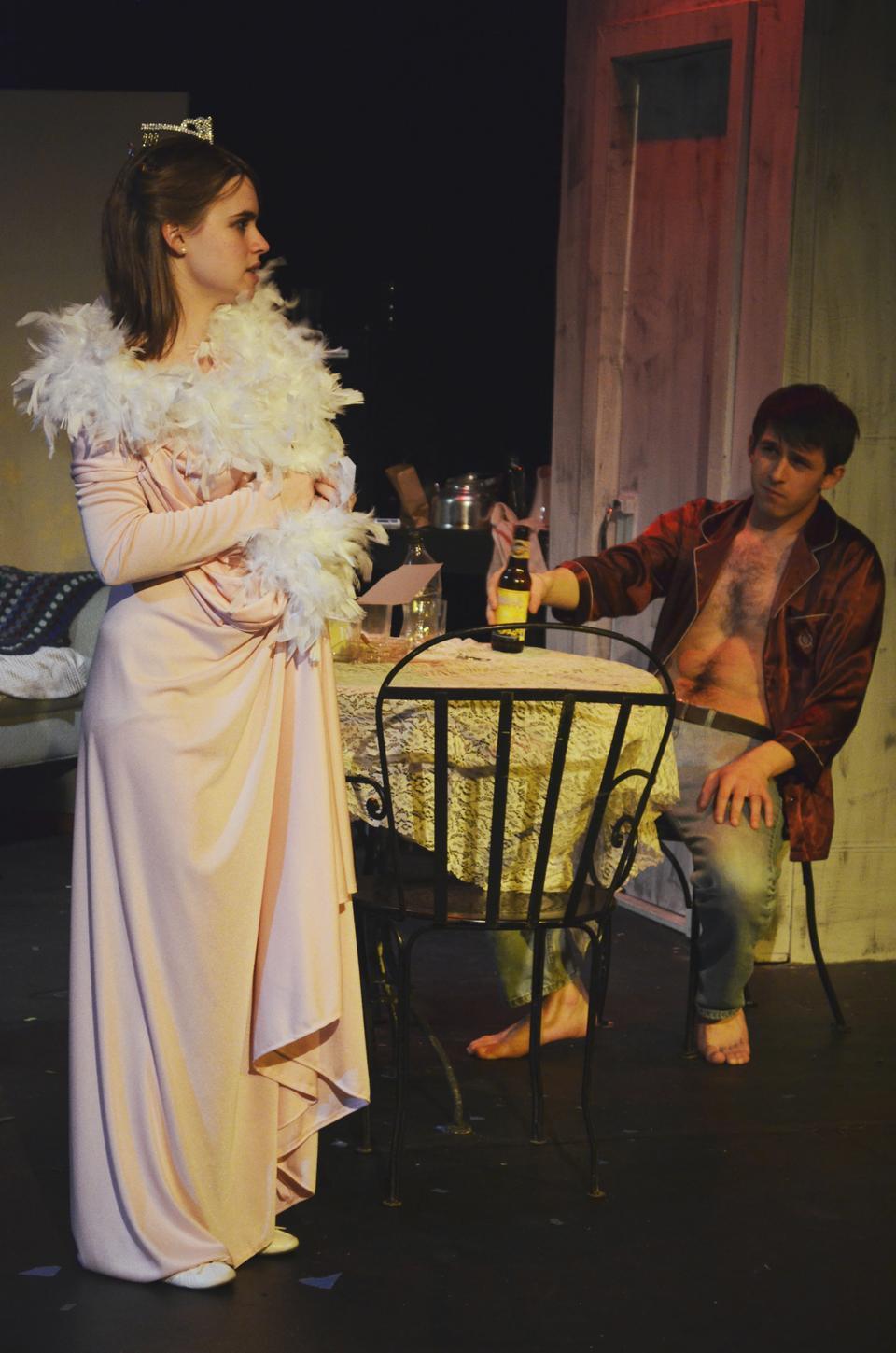
News
Cambridge Residents Slam Council Proposal to Delay Bike Lane Construction

News
‘Gender-Affirming Slay Fest’: Harvard College QSA Hosts Annual Queer Prom

News
‘Not Being Nerds’: Harvard Students Dance to Tinashe at Yardfest

News
Wrongful Death Trial Against CAMHS Employee Over 2015 Student Suicide To Begin Tuesday

News
Cornel West, Harvard Affiliates Call for University to Divest from ‘Israeli Apartheid’ at Rally
Burning with "Desire"

Given the events that have played out in Boston in the past week, it is a testament to power of the HRDC’s production of Tennessee Williams’s “A Streetcar Named Desire,” which ran through Saturday in the Adams Pool Theatre, that it was so completely able to transport the audience. From the moment Blanche (Ema H. Horvath ’16) stepped onstage and looked around with incredulity at an apartment ironically situated on Elysian Fields Avenue, the production, directed by Sayantan Deb ’14, crackled with energy, anger, and suppressed hysteria, transfixing by the sheer force of the actors’ charisma.
Blanche DuBois arrives in sultry New Orleans at the doorstep of her sister Stella (Olivia L. Ball ’14), looking for a place to stay after “losing” the plantation that had been in their family for centuries, the aptly-named Belle Reve. Her pretensions, however, are entirely intact, and Blanche makes clear from the first that she is hardly pleased with her sister’s cramped apartment. Nor is there much love lost between her and Stanley (Peter K. Bestoso ’14), Stella’s husband, who bristles under Blanche’s judgment and is convinced that she’s hiding something. Crammed together in a stifling apartment for a summer, it’s only a matter of time before anger boils over. The set, designed by Jihyun Ro ’15, a Crimson Arts editor, added to the mounting conflict with its claustrophobic furnishing: the only thing separating the apartment’s two rooms was a flimsy, semi-transparent curtain, destroying any sense of privacy the characters might have.
The irreconcilable differences between Blanche and her brother-in-law are the powder keg at the center of the play, and Horvath and Bestoso effortlessly pulled off this crucial dynamic. Deb decided to have Blanche’s monologues directed not towards the other characters, but towards the audience, a choice that heightened the sense that she is losing her grip on her sanity. Horvath seemed to be trying to convince herself of what she was saying as much as trying to convince others. In contrast to Blanche’s dreamy idealism, Stanley is rooted in reality. The gulf between the two characters was captured even in the way the characters spoke. Horvath, with her languorous drawl and wide-eyed, self-important speeches, conveyed Blanche’s delusions of grandeur and desperate pining to return to her youth. Horvath’s delivery of Blanche’s many sarcastic barbs was excellent as well, distilling years’ worth of bitterness into one or two snide words.
Bestoso’s Stanley, on the other hand, was all quick talk, grinning slyly with amused skepticism at his in-law’s grand schemes—he values frankness above all else, a fact that brings him quickly into conflict with his wife’s less-than-honest sister. In one scene, Blanche swanned around the living room in a ballgown and boa, blithely spinning a tale about an admirer of hers while Stanley, in a sweat-soaked wifebeater, glowered angrily at having to hear more of her lies, the divide between them as stark as the curtain drawn between their two rooms. Here, as elsewhere in the play, the sense of resentment was palpable: Bestoso’s Stanley was a volcano constantly threatening to erupt. Though there were plenty of instances in the play where Stanley’s rage found a violent outlet, Bestoso was able to create an atmosphere of unease and impending brutality even when none was explicitly threatened, capturing Stanley’s animal energy and overwhelming need for control.
Standing between the two of them is Stella, who tries and fails to be a peacemaker. Ball’s Stella was far more calm and subdued than Blanche, constantly looking to shelter her sister and her fragile emotional state. Yet Ball did not portray her character as a saint—her Stella was not Stanley’s victim, but emphatically his lover. Misguided though her affections may be, they were no less believable: the misty look in Ball’s eyes when she described Stanley was enough to convey the reality of Stella’s love. She and Bestoso had powerful chemistry, lending credence to Stella’s repeated assertion that she’s “not in anything she wants to get out of.”
Mitch (Jeremy Y. Venook ’15, a Crimson Arts columnist), Blanche’s admirer, is the opposite of Stanley: where Stanley is the epitome of unbridled masculine energy, Mitch seems like an overgrown child, nervous and tentative. With puppyish eyes and a voice high and full of boyish eagerness to please, Venook’s portrayal of Mitch resonated with Blanche’s past: she was fired from her job as a teacher for having an affair with a student. Her pairing with Mitch heightened the poignancy of Blanche’s decline.
With subtlety, emotional understanding, and raw power, Deb’s production did justice to this icon of American theater, capably teasing out the many conflicts that lie at the center of the play: reality versus fantasy, restraint versus physicality, the unattainable past versus the shock of modernity.
—Staff writer Erica X. Eisen can be reached at eeisen@college.harvard.edu.
Want to keep up with breaking news? Subscribe to our email newsletter.
